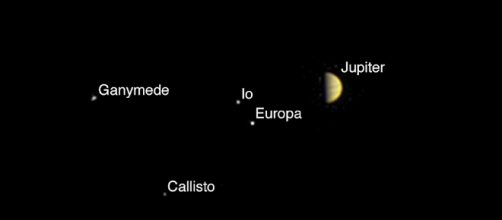Juno was launched 4 and some months ago and each day is getting closer to reaching its objective --Jupiter. The spacecraft is travelling at approximately 265,500 km (165,000 miles) per hour and as of today, only 6 days before arriving on Jupiter. Once in the gas giant planet, Juno will study it in detail.
Mission
Juno is currently on a journey to Jupiter that started back on August 5, 2011. On the date of its orbital insertion around Jupiter, the spacecraft will have travelled nearly 2.8 billion km (1.74 billion miles) or 18.7 AU. At its closest approach with the planet, Juno will have to reach a speed of 57.98 km (36.02 miles) per second.
Relative to Jupiter. On July 4, Juno will fire up its principal engine to a suitable speed that will allowed it to be pulled by Jupiter´s gravity.
Polar orbit
Juno will be placed on an orbit that travels over Jupiter´s poles. This orbit allows for a better mapping of a planet and detailed observation of the poles and auroras, which are some of the objectives in this mission. The 14 day orbit of the spacecraft and the 10 day rotation of Jupiter will allow Juno to obtain a complete mapping of the planet.This orbit also protects Juno from the damaging energetic particles in the equatorial belt, which could cause serious damage to electronics.
Jupiter´s mysteries
It´s not really known how much oxygen is contained within the planet.
Jupiter has a very strong magnetic field --14 times stronger than the earth´s field; however, it´s not really known how it is produced. Although, there are surface features, such as the Great Red Spot, it´s not known how deep inside the clouds this spot is. Scientists still don´t know what powers auroras at the poles of the gas giant.
Juno´s destiny
After the mission is complete, Juno will be directed into the planet´s deep interior, where it will pass through the thick mass of Jupiter´s atmosphere, pushing against the dense clouds of gas and burning up. This measure is to prevent Jupiter´s potentially habitable satellites from contaminating with microbes, presumably hidden within the spacecraft structure mechanism.
The mission will make it posible to acquire a better understanding of the processes of formation of Jupiter, the other gas giants and will provide a better insight into the evolution of planetary systems beyond the realm of the solar system. This advancesscientists comprehension of astronomy as a whole.

